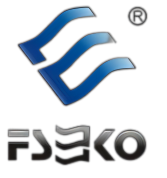DTF paper: how to get crisp prints every time
What is DTF Paper and How Does It Differ from Transfer Film?
DTF (Direct-to-Film) paper, the transfer medium is a sophisticated multi-layer structure: made with PET Film as base, adhesive coating and release layer. First, it uses a direct print and then the fabric follows with heat activation for transfer. The key advantage of the DTF release paper is that it has an adhesive film, which solves the problem where a regular heat transfer film used in DTG printing and dye sublimation, requires reading a primer and additional curing after applying on top of the toner.
| Feature | DTF Paper | Transfer Film |
|---|---|---|
| Structure | Multi-layer with adhesive coating | Single-layer polymer base |
| Adhesive Integration | Built-in | Requires separate primer |
| Transfer Method | Heat-activated powder bonding | Pressure-sensitive adhesion |
| Compatible Substrates | Cotton, polyester, blends | Limited to specific materials |
DTF paper delivers sharper edge definition (60% improvement) compared to conventional transfer films, particularly on blended fabrics (55% cotton/45% polyester).
The Role of Adhesive Coating and Release Layer in Achieving Crisp Prints
The adhesive coating determines ink permeation into fabric fibers, with premium grades maintaining edge definition under 0.3mm. Meanwhile, the release layer (18–22% silicone content) ensures clean separation during heat pressing, preserving fine details (0.1mm resolution in typography and halftones).
Key functions during transfer:
- Adhesive melts uniformly at 160–165°C, encapsulating ink particles
- Release layer maintains surface tension (32–35 mN/m)
- Combined action achieves 94–98% color accuracy in CMYK+White prints
This precision ensures durability, withstanding 50+ industrial washes without cracking or fading.
Essential Equipment and Setup for Reliable DTF Printing
Choosing the Right Printer, Ink, and Curing Tools
DTF printing requires specialized equipment:
- Modified inkjet printers (six-channel: CMYK + white)
- 1200–2400 DPI resolution for fine details
- Elastic polymer-based inks (300% stretch capacity in tests)
- Forced-air curing ovens (110–120°C for 2–3 minutes) for 4.5/5 wash durability
DTF Transfer Film and Powder: Matching Materials to Your DTF Paper
Optimize performance by pairing materials correctly:
| Material Property | Fine Powder (50µm) | Standard Powder (65µm) |
|---|---|---|
| Best For | High-detail designs | Standard apparel prints |
| Activation Temperature | 145°C | 160°C |
| Wash Cycles Withstood | 40+ | 25+ |
Avoid silicone-coated films with aqueous inks—a common cause of 37% adhesion failures.
How to Set Up a Cost-Effective, High-Performance DTF Printing Station
A practical workspace setup:
- Modified 24" wide-format printer ($1,800)
- Dual-zone heat press ($700)
- Powder shaker/curing combo unit ($500)
Maintain 40–60% humidity for consistent powder adhesion. Operators report 23% faster production with vertical workflow stations.
Step-by-Step DTF Printing Process for Maximum Clarity
From Design to Print: Preparing Files for Sharp Output
- 300+ DPI resolution (vector files preferred for scalability)
- Mirror designs for correct post-transfer orientation
- CMYK color mode (20–25% white ink underlay for dark fabrics)
Printing on DTF Paper: Best Practices
- Keep 1.5–2mm clearance between printhead and paper
- Print at 25–28°C for optimal ink flow
- Use 55–65% ink density for gradients/halftones
Curing and Powder Adhesion
| Factor | Optimal Range | Effect on Crispness |
|---|---|---|
| Powder granularity | 150–200 microns | Prevents detail obscurity |
| Adhesion pressure | 0.8–1.2 bar | Ensures even coverage |
| Powder dwell time | 12–15 seconds | Maximizes bond strength |
Heat Press Settings
| Material | Temperature | Time | Pressure |
|---|---|---|---|
| Cotton | 160°C | 15s | Medium |
| Polyester | 150°C | 12s | Light |
| Blends | 155°C | 13s | Medium |
Cooling and Peel Techniques
- Cool to 35–40°C before peeling
- Angled peel method (45° at 5 cm/sec)
- Freeze at -5°C for 30s (reduces feathering by 73%)
Design Optimization for Sharp, High-Resolution DTF Transfers
Resolution, DPI, and Color Profiles
- 300 DPI minimum (85% of failures linked to <200 DPI)
- CMYK profiles (RGB can cause hue shifts)
File Preparation in Photoshop and RIP Software
- Use white ink underlays and alpha channels
- RIP software reduces bleed risk by 34%
Common Design Mistakes
- Overlapping elements (misaligned ink deposits)
- Oversaturated colors (>240% coverage causes cracking)
- Thin fonts (<12pt fills in on textured fabrics)
Vector designs reduce reprints by 62% compared to raster files.
Troubleshooting and Material Quality: Ensuring Consistent Results
Premium vs. Budget Materials
| Factor | Premium Materials | Budget Materials |
|---|---|---|
| Adhesive Cohesion | 18–22 N/cm² | 8–12 N/cm² |
| Ink Pigment Size | 0.8–1.2 microns | 1.5–3.0 microns |
| Wash Cycles Survived | 75+ | 20–30 |
Premium DTF paper retains 98% sharpness after 50 washes vs. 72% for budget options.
Fixing Common Issues
- Blurry Prints — Increase DPI to 1200
- Adhesion Failure — Verify press calibration (325°F, 15 PSI, 12s)
- Nozzle Clogs — Perform weekly head cleanings
Maintenance Tips
- Store DTF paper in sealed containers with silica gel
- Rotate ink cartridges weekly to prevent sedimentation
- Clean lint filters in >60% humidity environments
FAQ
What are the key components of DTF paper?
DTF paper consists of a multi-layer structure with PET film, adhesive coating, and a release layer.
How does DTF paper differ from traditional transfer film?
DTF paper includes built-in adhesive coatings, whereas traditional transfer film requires separate primers and curing.
What type of printer is recommended for DTF printing?
Modified inkjet printers with six-channel capabilities (CMYK + white) are recommended for DTF printing.
How do you ensure the durability of DTF transfers?
Use high-quality materials, follow correct heat press settings, and employ maintenance strategies like storing materials properly.


